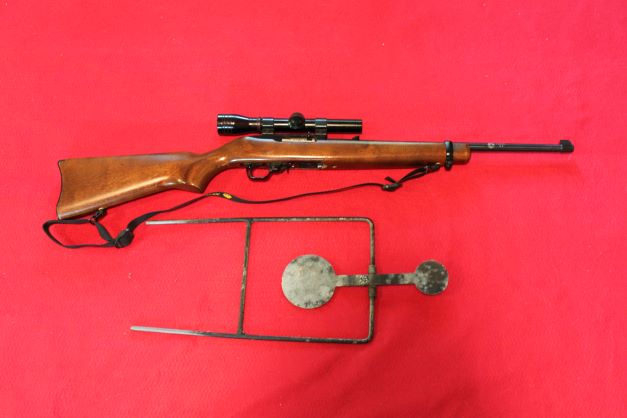
By Jim Dickson | Contributing writer
Informal plinking is one of the most pleasurable forms of shooting and also the most productive in gaining new shooting skills.
Freed from the formal restraints and pressures to conform to a rigid shooting style the shooter is free to experiment with what works best for him/her. It is a time to get comfortable with your gun and just enjoy shooting without the pressure of someone looking over your shoulder and judging your performance.
Plinking is a good way to try out different styles of shooting; instinct shooting without sights, competitive target shooting with sights, aimed rapid fire with scout scope equipped semi-auto rifles, the British style of shotgun shooting, etc. It is good to master different styles.
Plinking is typically done out in the country instead of at a shooting range. You need a safe backstop with no big rocks to create ricochets, and a bit of privacy. Targets are ones of convenience such as tin cans, charcoal briquettes, wood kitchen matches, spent shotgun shells or metallic cartridge cases down to .22 Long Rifle. Just don’t shoot at anything made from glass, and you probably don’t want to use charcoal briquettes as an aerial target unless you want to go home looking like you spent the day digging in a coal mine. They make a great ground target so long as they are far enough away that they don’t get soot on you when you break them.
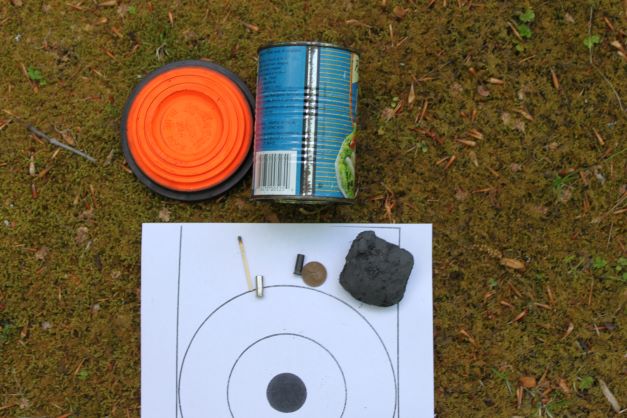
There are also commercially-available metallic or synthetic targets which may be safely used.
Be sure to clean up when you go as littering is illegal and it also gives all shooters a bad reputation when people find a mess left behind.
Moving targets can be made by suspending them on a string and then starting them swinging. Generations of shooters have thrown sticks and wood chips into streams and rivers to have a moving target to shoot at. At certain times rivers like the mighty Mississippi have enough debris from storms in them that one just has to pick out the target he wants among everything going past.
Shooting coins out of the air with a pistol or rifle is an old instinct shooting trick that can be practiced anywhere that you have a safe direction for the spent bullets to fall. Just don’t expect to ever find a coin after it has been hit. It’s probably somewhere in the next county. Only in the movies does the spent coin fall back with a neat hole drilled through it for everyone to marvel.
Plinking is also a good way to find out what does not work in the real world such as holding a pistol on its side to shoot it “Gangsta’ style.” May all the hoodlums shoot this way. Their intended victims will be a lot safer.
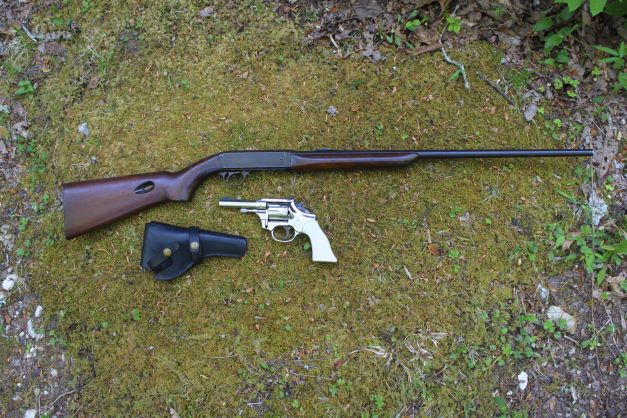
While most informal shooting will be done with .22LR pistols and rifles any gun can be used to the shooter’s advantage. You may be surprised at just how accurate some of the fixed sight pistols are. Once you get familiar with a gun’s characteristics, plinking with fixed sights is no handicap.
Only through shooting can you determine what rifles and shotguns are best for accuracy. For reasons no one fully understands, the little M1 carbine is rock steady and an unaltered M98K Mauser bolt-action rifle is extremely lively and accurate. Old long-barreled unaltered military rifles like trapdoor Springfield and Mauser rifles are surprisingly accurate when firing offhand.
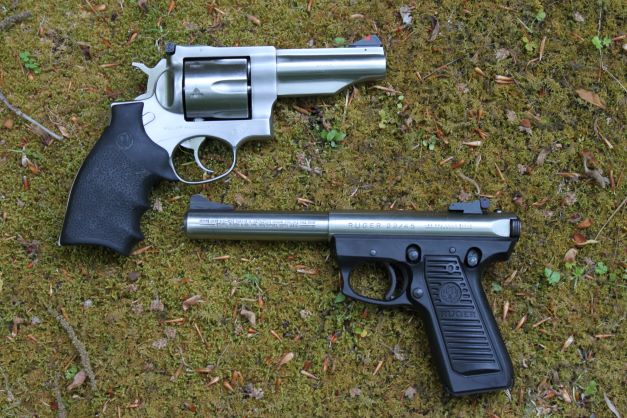
While many people may recommend holding the trigger with the tip of the trigger finger you may find you get better control of a pistol if you use the crook of the first joint. Different handguns often may require slightly different holds. The military used to teach soldiers to hold the thumb up when firing a M1911A1 but if they let the recruit fire 200 rounds at a time they would find that this is a sure way to raise a blister on the thumb.
Other examples include the Mauser Military Pistol, which becomes rock steady if you put the left hand over the front of the magazine well and pull the gun tight against you instead of placing the hand over the small of the stock as many Europeans do.
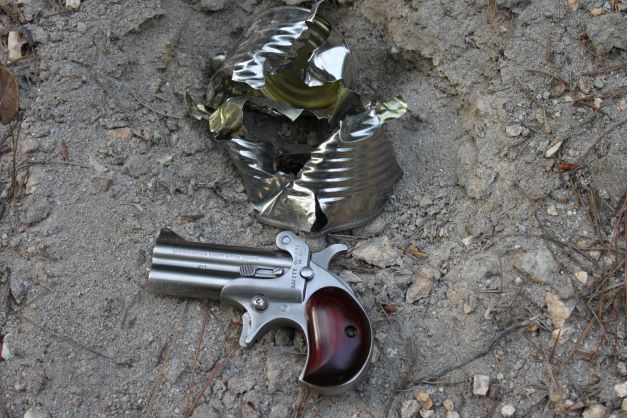
The Luger pistol is the easiest to shoot and most accurate sidearm ever made and is superbly reliable as long as it has the proper ammunition and springs. It doesn’t seem to care how you hold it.
Meanwhile, the Colt Single Action Army is particularly fussy about how it is cocked and held. This handgun cannot be held with too high a grip. Like the near vertical hammer spur percussion Colts, this revolver should be cocked with the thumb laid crossways on the hammer thus throwing the grip high on the gun.
Double action revolvers are held with the thumb down and the crook of the trigger finger around the trigger. There are two ways to reliably fire double action. Pulling straight through, or carefully pressing the trigger until almost to the point of firing and then finishing the pull. Both methods take practice and both are worth learning.
A good trigger pull, like on a Ruger Redhawk, makes double action firing as accurate as single action firing from the same gun. I always shoot a double action revolver as a double action as that is what they are designed for. They have a poor grip and hammer design for single action use and you are better off getting a Colt Single Action Army revolver if you are going to fire your revolver as a single action.
(Editor’s note: Other handgunners may disagree, particularly when making a precision long-range shot is necessary.)
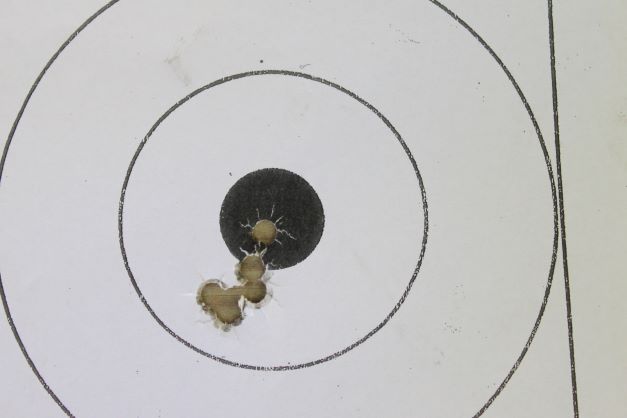
A closely guarded 19th Century Single Action secret was the gunfighter’s grip on this revolver. This enabled a trained gunfighter to accurately point and fire his gun right alongside a Model 1873 or Model 1892 Winchester rifle at all ranges. It begins by cocking the pistol with the thumb held crossways so that the hand is held as high on the gun as possible with the spur of the cocked hammer digging into the hand. This spur leaves the factory with sharp edges as two polished surfaces converge there. You may want to file or stone this edge unless you like getting cut. It won’t show on the gun as long as you go straight against the sharp edge.
You will find that the so-called “Primitive” iron sights are no handicap in shooting single-action revolvers. If you have a gun you should shoot it and get to know it and what it will do. Informal plinking is the best way to try it out in all applications such as snap shooting, instinct shooting, precision shooting with sights, hip shooting, etc. Remember plinking is supposed to be fun so have at it.
I say that there are only three ways to learn to shoot: shooting, shooting, and more shooting. Informal plinking will help you fine tune the method that best suits you as an individual. If you don’t try different things you won’t really know for yourself what works and what does not. Don’t be afraid to experiment, for that is how you learn.
Remember that plinking is supposed to be fun and not a rigid repetitious drill like being on the rifle range. Try different shooting positions and experiment to see what works best for you. Everyone is different. Some find the kneeling position steady and others find it unsteady even though they are doing it exactly the same way. Remember that all the famous shooting positions began with experimentation.
The bottom line is plinking is fun and it also can be the best learning place for the shooter to truly become well-rounded and proficient.



